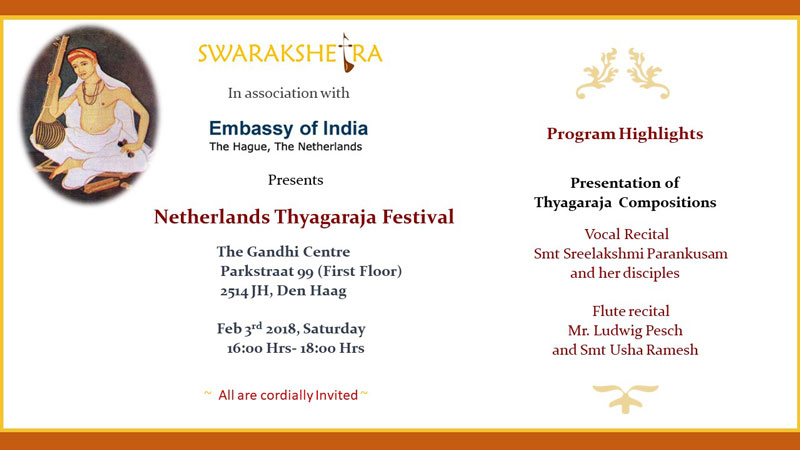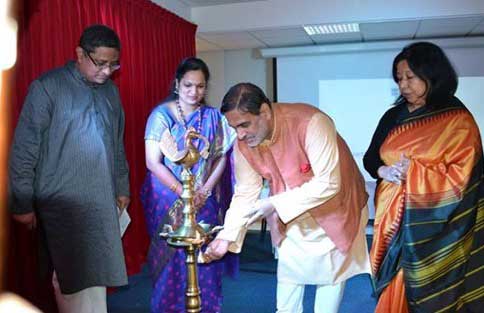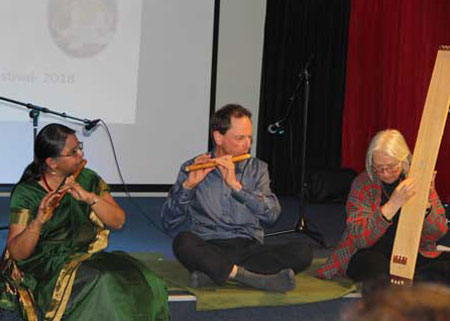Martin Spaink (Amsterdam) earned a name for himself as a leading tanpura expert. Read more on the finer points of tanpura playing, stringing, tuning, maintenance, restoration and playing techniques. Read his article on fine-tuning of a tanpura >>
As performers-cum-teachers, we should practise with the traditional tambura and teach music with the same to the students.
Malladi Brothers quoted by Aruna Chandaraju in The Hindu >>
Learn more about the tambura (tanpura) >>
Tambura posture, fingering & therapeutic effect
By Rama Kausalya
The Tambura is considered queen among the Sruti vadhyas such as Ektar, Dotar, Tuntina, Ottu and Donai. Although tamburas are traditionally made at several places, the Thanjavur Tambura has a special charm.
Veena Asaris are the Tambura makers too but not all are experts, the reason being it requires a special skill to make the convex ‘Meppalagai’ or the plate covering the ‘Kudam’ (Paanai).
There are two ways of holding a Tambura. One is the “Urdhva” – upright posture, as in concerts. Placing the Tambura on the right thigh is the general practice. The other is to place it on the floor in front of the person who is strumming it. While practising or singing casually, it can be placed horizontally on the lap.
The middle finger and index finger are used to strum the Tambura. Of the four strings, the ‘Panchamam’, which is at the farther end is plucked by the middle finger followed by the successive plucking of ‘Sārani’, ‘Anusārani’ and ‘Mandara’ strings one after the other by the index finger. This exercise is repeated in a loop resulting in the reverberating sruti.
Sit in a quiet place with eyes closed and listen to the sa-pa-sa notes of a perfectly tuned Tambura – the effect is therapeutic.
Except a few, the current generation prefers electronic sruti accompaniment, portability being the obvious reason. Besides few music students are taught to tune and play the tambura. Beyond all this what seems to swing the vote is that the electronic sruti equipment with its heavy tonal quality can cover up when the sruti goes astray.
During the middle of the last century, Miraj Tambura (next only to the vintage Thanjavur) was a rage among music students, who were captivated by its tonal quality with high precision and the beautiful, natural gourd resonators.
Source: “Therapeutic effect”, The Hindu (Friday Review), 30 March 2018



